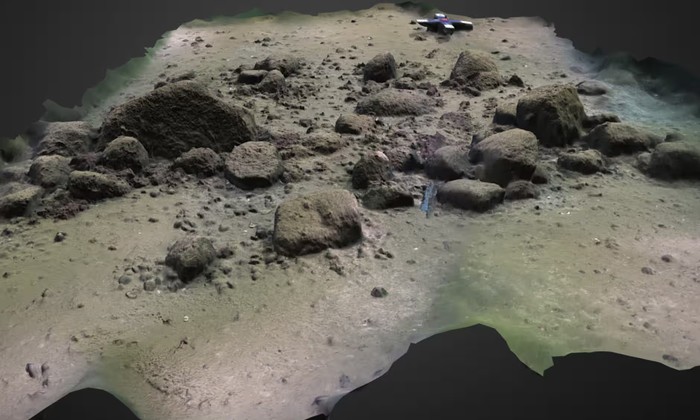In the depths of the Baltic Sea lies a breathtaking structure that has left scientists astounded. It is the remnants of a massive wall, claimed not to be a product of natural occurrences but a tangible creation of human hands in the distant past.
In a report published in the Proceedings of the National Academy of Sciences, a team of German researchers who stumbled upon this megastructure referred to it as Blinkerwall. With unwavering conviction, these researchers assert that Blinkerwall is indeed a human-made construction.
Led by geoscience experts from the University of Kiel, the research team unveiled that certain sections of the wall, submerged in the Baltic Sea, date back to the mid-Holocene era, between 5,000 and 7,000 years ago.
Based on sediment dating estimates placing Blinkerwall's age between 10,000 and 11,000 years during the Stone Age, scientists assert that the uniformity of this elongated structure, spanning 971 meters, indicates human craftsmanship rather than glacial movements or tsunamis.
If proven true, this discovery could potentially be the oldest human-made megastructure in Europe. Despite the entire structure now submerged beneath waters, approximately 21 meters deep and situated six miles off the coast of Germany in the Mecklenburg Bay, scientists believe that the wall was constructed near the edge of a lake or marshland, serving as a barrier, akin to a driving wall for hunting deer.
"When chasing animals, they would follow this structure; they wouldn't try to jump over it," stated one of the researchers, Jacob Geersen, as reported by The Guardian. "The idea is to create artificial congestion with a second wall or lakeside," he added.
Indeed, geoscience experts affirm that they have found evidence of a second wall parallel to the larger Blinkerwall, although it is likely buried in sediment.
While other significant structures have been discovered in Mecklenburg Bay, the Kiel team only detected Blinkerwall during their research expedition in 2021. Utilizing multibeam echosound data, they determined its height to be approximately one meter at the highest point, supporting the theory of its function as a driving wall.
"This places Blinkerwall among the oldest examples of hunting architecture in the world and potentially makes it the oldest human-made megastructure in Europe," the researchers continued.
Additionally, another researcher, Marcel Bradtmoleer from the University of Rocstock, explained on CNN's platform that sea levels rose significantly after the end of the last ice age around 8,500 years ago, resulting in the flooding of walls and much of the landscape.
"The wall may have been used to guide reindeer to the edge of the lake and close to the wall, or even into the lake, where Stone Age hunters could more easily kill them with their weapons," he revealed.
The discovery of Blinkerwall not only sheds light on ancient human endeavors but also underscores the ingenuity and resourcefulness of our ancestors in navigating and harnessing their environment for survival and sustenance. As scientists delve deeper into the mysteries of this remarkable structure, the story of Blinkerwall continues to captivate and intrigue, offering profound insights into the distant past and the evolution of human civilization.





